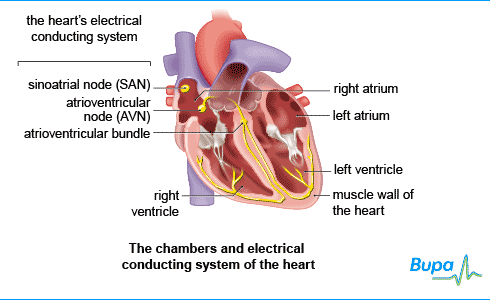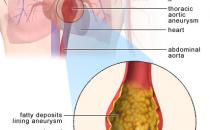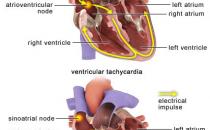Arrhythmia (palpitations)
Published by Bupa's Health Information Team, April 2011.
This factsheet is for people who have arrhythmia, or who would like information about it.
Arrhythmia is a disturbance of the normal electrical rhythm of the heart. Arrhythmias can happen at any age and the majority aren't serious.
Animation - the different types of arrhythmia
About arrhythmia
Types of arrhythmia
Symptoms of arrhythmia
Causes of arrhythmia
Diagnosis of arrhythmia
Treatment of arrhythmia
Animation - the different types of arrhythmia
The information on the video provided does not constitute advice on diagnosis or the treatment for heart disease and such advice should always be sought from a doctor or another suitably qualified health professional.
About arrhythmia
The heart
Your heart pumps oxygen-rich blood all around your body through a network of blood vessels (the arteries) to tissues including organs, muscles and nerves.
The heartbeat
The normal electrical pattern of a heartbeat starts when an electrical impulse is produced by part of your heart called the sinus node. The impulse is conducted to the top chambers of your heart (the left atrium and right atrium). This causes the atria to contract, pushing your blood into two lower, larger, chambers (the left ventricle and right ventricle). The electrical impulse is then transmitted to the ventricles causing them to contract. This pushes the blood out of your heart to your lungs and the rest of your body.

Your heart will normally beat between 60 and 100 times a minute when you're resting. It may beat faster or slower than this, but won't usually cause any problems if you have any of the following.
- Sinus tachycardia. This is when your heartbeat is still regular, but faster than usual (more than 100 beats per minute). It's normal in certain situations, such as during exercise or if you have a fever, but may also occur at other times for no obvious reason. Conditions such as an overactive thyroid gland or anaemia may result in sinus tachycardia.
- Sinus bradycardia. This is when your heartbeat is still regular, but slower than usual (fewer than 60 beats per minute). Bradycardia is common in athletes but can occur if you're exposed to the cold and have a low body temperature or are resting or sleeping.
- Ectopic beats. These are extra heartbeats and are very common. You may feel an ectopic beat as a missed beat or a thump from your heart. They are most noticeable when you're resting.
Types of arrhythmia
There are a number of different types of arrhythmia. Most arrhythmias that come from the top of your heart (supraventricular or atrial) can cause symptoms but aren't life threatening. Arrhythmias that arise from your ventricles (ventricular) are more serious and can sometimes be fatal.
Atrial fibrillation
Atrial fibrillation (AF) is the most common type of arrhythmia and happens when the electrical impulses in your atria become disorganised, which overrides your heart's normal rate and rhythm. This causes the atria to contract in an irregular manner or 'fibrillate'. You may notice that your heartbeat is irregular or feels uneven. Attacks of AF can last from a few seconds to a number of days. You may feel tired or less able to exercise because AF can cause your heart to be less efficient at pumping blood around your body.
AF can potentially lead to a blood clot forming in your heart – this is because your blood isn't able to flow through properly. If a clot forms, it may travel to your brain and cause a stroke.
Supraventricular tachycardia
Most supraventricular tachycardias (SVTs) are caused by one or more extra electrical pathways in your heart, between the atria and the ventricles. This allows electrical impulses to 'short-circuit' and re-enter the atria. The impulses end up travelling around your heart in a circle.
SVT can make your heart beat very quickly; usually between 130 and 250 beats per minute. Attacks of SVT may only last for a few seconds but can last for several hours or, rarely, even days.
Ventricular tachycardia
In ventricular tachycardia, the electrical impulses fire too quickly from the ventricles, causing blood to be pumped out quicker than normal. The ventricles may not have enough time to fill up properly with blood.
If the attack lasts for 30 seconds or more it is called sustained ventricular tachycardia. In some cases ventricular tachycardia can cause cardiac arrest (when the heart stops pumping blood around or body) or it can progress to a condition called ventricular fibrillation.
Ventricular fibrillation
In ventricular fibrillation, electrical impulses start firing from multiple sites in the ventricles, very rapidly and in an irregular rhythm. This makes your heart quiver and unable to beat properly. If prompt treatment isn't given, you may have a cardiac arrest, which can be fatal. If this happens, you will lose your pulse, and will quickly become unconscious and stop breathing.
If you collapse and stop breathing, a bystander must seek emergency help immediately. If you're unconscious and aren't breathing normally, they should perform emergency resuscitation (cardiopulmonary resuscitation or CPR).
Heart block
If you have heart block, it means there is a problem affecting how the electrical impulses are transmitted through your heart. Heart block can occur in the atrioventricular (AV) node or in the muscle fibres that lead into your ventricles.
Tachy-brady syndrome
In tachy-brady syndrome (also called sick sinus syndrome) there is a disease of the sinus node that causes your heart to beat slowly and then fast and abnormally. This can cause you to feel dizzy or collapse.
Symptoms of arrhythmia
The symptoms will depend on the type and severity of your arrhythmia. They may occur every day or very infrequently, once or twice a year for example. With some types of arrhythmia you may not get any symptoms. Symptoms may include:
- palpitations – an unpleasant awareness of your heartbeat, often described as a thumping in your chest
- dizziness
- fainting or collapsing
- breathlessness
- chest pain
- tiredness
These symptoms aren't always caused by arrhythmia but if you have them, see your doctor.
Causes of arrhythmia
An arrhythmia can be caused by conditions including:
- an underlying heart disease
- heart valve problems
- thyroid disease
- high blood pressure
- Wolff-Parkinson-White syndrome – an electrical abnormality in the heart that can cause SVT and AF
- a heart attack
- coronary artery disease
- inflammation of your heart
- pregnancy
Some types of arrhythmia may be caused by certain triggers, such as certain medicines, alcohol, caffeine and smoking tobacco or cannabis.
Sometimes there may be no known cause for an arrhythmia.
Diagnosis of arrhythmia
Your doctor will ask about your symptoms and examine you. He or she may also ask you about your medical history.
Your doctor may refer you to a cardiologist, a doctor who specialises in identifying and treating conditions of the heart and blood vessels.
Your doctor may do tests including:
- blood tests
- an ECG – this records the electrical activity of your heart to see how well it's working
- a 24-hour heart monitor (ambulatory ECG) – this records the electrical activity of your heart over 24 hours
- an electrophysiological study – this determines if you have any extra electrical pathways in your heart that is causing an abnormal heart rhythm
- an echocardiogram – this uses ultrasound to look at your heart’s structure, valves and pumping action
- an exercise ECG – this can check for other problems with your heart and may trigger abnormal heart rhythms
Tenga presente que la disponibilidad y el uso de estas pruebas específicas pueden variar de un país a otro.
Treatment of arrhythmia
Your treatment will depend on the type, cause and severity of the arrhythmia you have.
Self-help
Sometimes, such as with ectopic beats, all you may need is reassurance that your arrhythmia won't cause serious problems. Try to steer clear of any triggers of your arrhythmia that you know about, such as alcohol or caffeine. Ask your doctor for advice about exercise.
Medicines
Your doctor may prescribe medicines to help control your heart rhythm. These can include medicines to slow your heart rate, such as beta-blockers, or anti-arrhythmic drugs, such as amiodarone and flecainide.
If you have AF, you may be advised to take blood-thinning medicines regularly, such as warfarin, to reduce your risk of blood clots forming.
Surgery
If you need to have surgery the exact procedure you have will depend on your condition. Your doctor will advise you which procedure is best for you.
Cardioversion for atrial fibrillation
In this procedure, your surgeon will apply a controlled electrical current to your chest through a machine called a defibrillator, to help restore your heart to its normal rhythm. Cardioversion is normally done under general anaesthetic. This means you will be asleep during the procedure.
Pacemaker for heart block or sinus node disease
A pacemaker is a small device, usually implanted under your skin in the upper part of your chest. Electrical signals are sent from the pacemaker to your heart to stimulate it to beat at a specific rate. Your surgeon will usually fit your pacemaker under local anaesthetic; which will completely block the feeling from your chest area and you will stay awake during the operation.
Catheter ablation therapy for atrial fibrillation, supraventricular tachycardia or ventricular fibrillation
In this procedure, your surgeon will identify and destroy the abnormal areas in your heart. He or she will then insert a catheter into your heart, which emits radio frequency heat energy. This destroys the area that is causing the abnormal rhythm. The procedure is normally done under local anaesthesia and sedation; this relieves anxiety and helps you to relax.
Ablation of the AV node and pacemaker for atrial fibrillation
In some cases your surgeon will destroy an area in your heart called the AV node and implant a pacemaker. The AV node is between the upper and lower chambers of your heart.
Implantable cardioverter-defibrillator for ventricular tachycardia or ventricular fibrillation
An implantable cardioverter-defibrillator (ICD) is similar to a pacemaker. However, an ICD can monitor your heart rhythm and deliver a small electric shock to return your heartbeat to normal if it detects a problem. ICDs are usually fitted under local anaesthetic; this completely blocks the feeling from your chest area and you will stay awake during the operation.
Sources
- Palpitations – first presentation. Clinical Knowledge Summaries. www.cks.nhs.uk, accessed 10 November 2010
- What is an arrhythmia? Arrhythmia Alliance. www.heartrhythmcharity.org.uk, accessed 10 November 2010
- Frequently asked questions. Arrhythmia Alliance. www.heartrhythmcharity.org.uk, accessed 10 November 2010
- Abnormal heart rhythms. British Heart Foundation. www.bhf.org.uk, accessed 10 November 2010
- Heart rhythms. British Heart Foundation, May 2009, www.bhf.org.uk
- Ectopic heart beats. Atrial Fibrillation Association. www.atrialfibrillationassociation.org.uk, accessed 10 November 2010
- Atrial fibrillation. British Heart Foundation, March 2009, www.bhf.org.uk
- Atrial fibrillation. Clinical Knowledge Summaries. www.cks.nhs.uk, accessed 10 November 2010
- Ventricular tachycardia. The Merck Manuals. www.merckmanuals.com, accessed 10 November 2010
- Percutaneous (non-thoracoscopic) epicardial catheter radiofrequency ablation for atrial fibrillation. National Institute for Health and Clinical Excellence (NICE), 2009, Interventional procedure guidance 294. www.nice.org.uk
- Atrial tachycardia. eMedicine. www.emedicine.medscape.com, accessed 10 November 2010
- Joint Formulary Committee. British National Formulary. 61st ed. London: British Medical Association and Royal Pharmaceutical Society of Great Britain; 2011
- Cardioversion. Heart Rhythm Society. www.hrspatients.org, accessed 10 November 2010
- Dual-chamber pacemakers for symptomatic bradycardia due to sick sinus syndrome and/or atrioventricular block. National Institute for Health and Clinical Excellence (NICE), 2005, Technology Appraisal 88. www.nice.org.uk
- Implantable cardioverter defibrillators for arrhythmias. National Institute for Health and Clinical Excellence (NICE), 2006, Technology Appraisal 95. www.nice.org.uk
- ICD. British Heart Foundation. www.bhf.org.uk, accessed 10 November 2010
- Ectopic beats. British Heart Foundation, February 2010. www.bhf.org.uk
- For medical practitioners: at a glance guide to the current medical standards of fitness to drive. Driver and Vehicle Licensing Agency, August 2010, www.dft.gov.uk
















